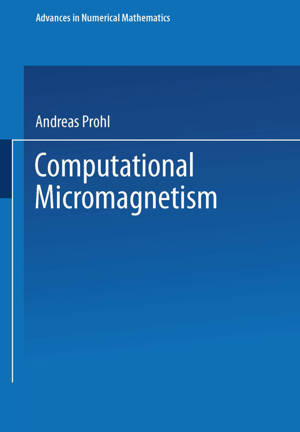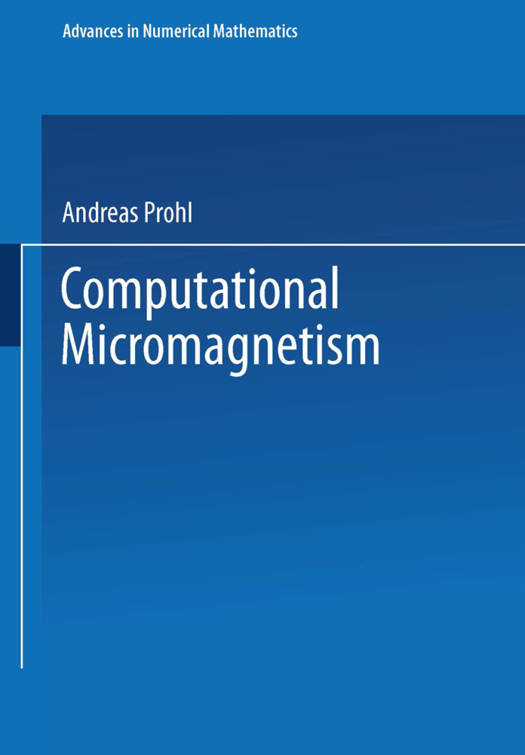
- Afhalen na 1 uur in een winkel met voorraad
- Gratis thuislevering in België vanaf € 30
- Ruim aanbod met 7 miljoen producten
- Afhalen na 1 uur in een winkel met voorraad
- Gratis thuislevering in België vanaf € 30
- Ruim aanbod met 7 miljoen producten
Zoeken
€ 52,95
+ 105 punten
Omschrijving
Ferromagnetic materials are widely used as recording media.
Their magnetic patterns are described by the well-accepted model of Landau and Lifshitz. Over the last years, different strategies habe been developed to tackle the related non-convex minimization problem: direct minimization, convexification, and relaxation by using Young measures. Nonstationary effects are considered in the extended models of Landau, Lifshitz and Gilbert for (electrically conducting) ferromagnets.
The objective of this monograph is a numerical analysis of these models. Part I discusses convergence behavior of different finite element schemes for solving the stationary problem. Part II deals with numerical analyses of different penalization/projection strategies in nonstationary micromagnetism; it closes with a chapter on nematic liquid crystals to show applicability of these new methods to further applications.
Their magnetic patterns are described by the well-accepted model of Landau and Lifshitz. Over the last years, different strategies habe been developed to tackle the related non-convex minimization problem: direct minimization, convexification, and relaxation by using Young measures. Nonstationary effects are considered in the extended models of Landau, Lifshitz and Gilbert for (electrically conducting) ferromagnets.
The objective of this monograph is a numerical analysis of these models. Part I discusses convergence behavior of different finite element schemes for solving the stationary problem. Part II deals with numerical analyses of different penalization/projection strategies in nonstationary micromagnetism; it closes with a chapter on nematic liquid crystals to show applicability of these new methods to further applications.
Specificaties
Betrokkenen
- Auteur(s):
- Uitgeverij:
Inhoud
- Aantal bladzijden:
- 304
- Taal:
- Engels
- Reeks:
Eigenschappen
- Productcode (EAN):
- 9783519003588
- Verschijningsdatum:
- 11/12/2001
- Uitvoering:
- Paperback
- Formaat:
- Trade paperback (VS)
- Afmetingen:
- 170 mm x 244 mm
- Gewicht:
- 517 g

Alleen bij Standaard Boekhandel
+ 105 punten op je klantenkaart van Standaard Boekhandel
Beoordelingen
We publiceren alleen reviews die voldoen aan de voorwaarden voor reviews. Bekijk onze voorwaarden voor reviews.











